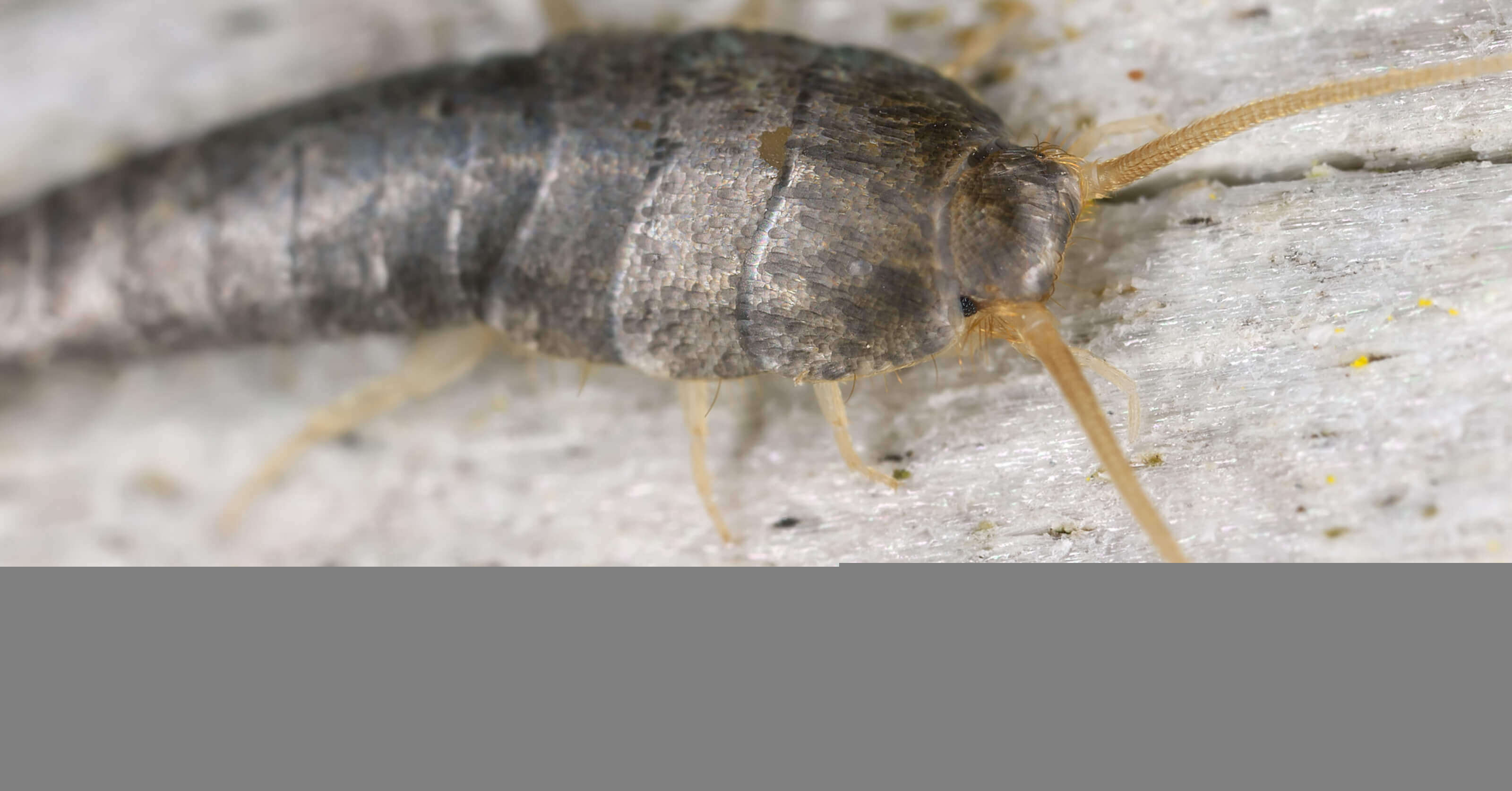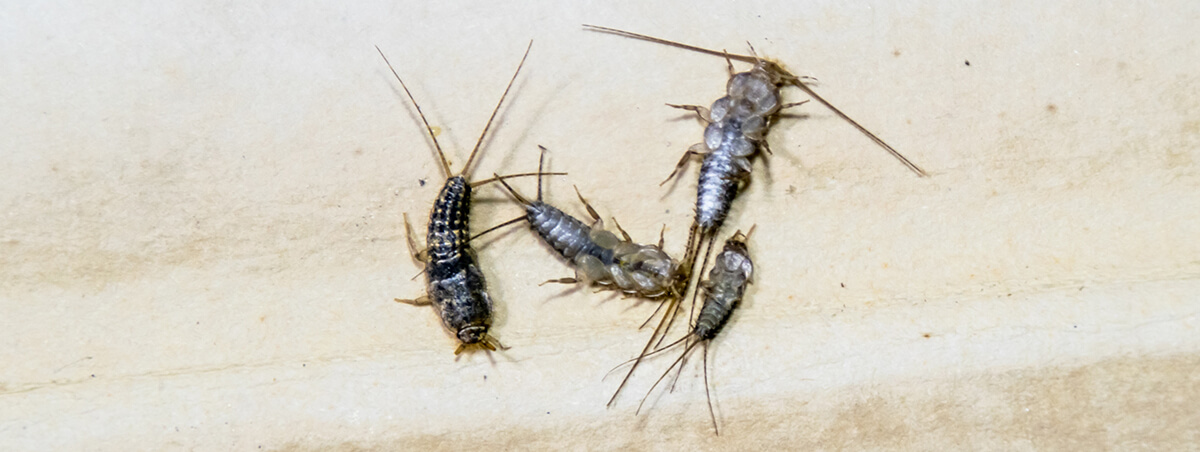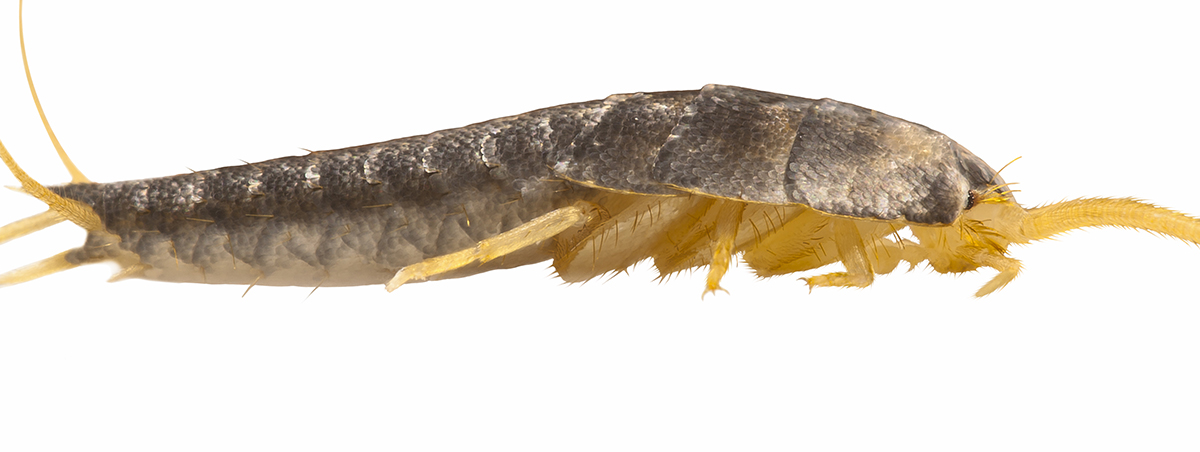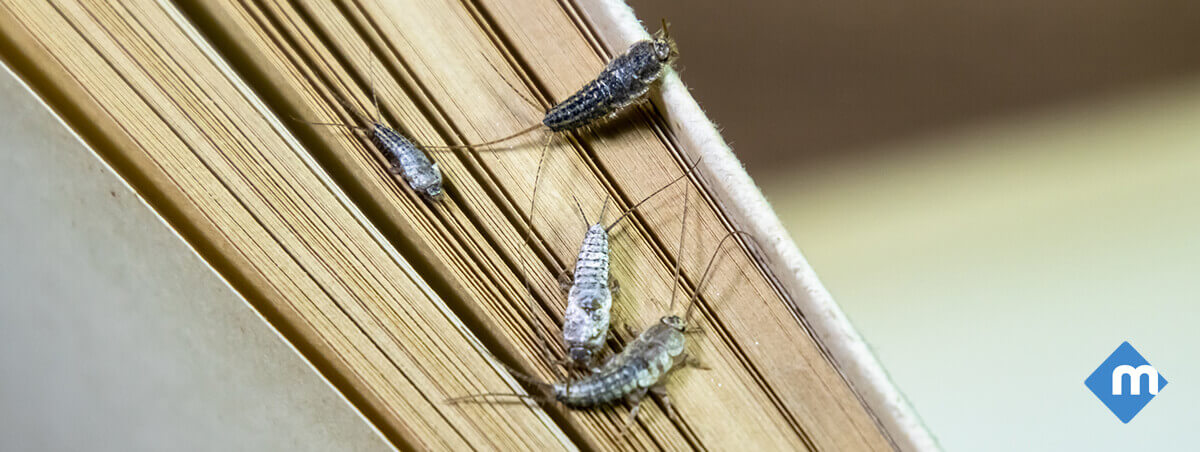The Sneaky Truth about Silverfish

We’ve all seen them. Silverfish are one of the most common pests found indoors—especially during the fall. Since these pests prefer relatively warm and humid environments, temperature drops in autumn bring silverfish knocking at your door.
Or rather, sneaking in behind your back.
Are Silverfish Harmful?
Silverfish don’t bite and are aren’t overtly dangerous, but that doesn’t mean they’re innocent. There’s a lot more to silverfish than their oblong silvery bodies and long antennae. Don’t be fooled by their drab appearance… silverfish are capable of some impressive (and highly exasperating) feats.

Silverfish are Survivors
The number one thing silverfish are good at is repopulating. Female silverfish lay 1-3 eggs at a time, and most silverfish live up to 3 years. A single silverfish can produce more than 50 offspring. Eggs usually take a few months to hatch, so a couple months of minimal silverfish activity can quickly turn into an SOS infestation.
Relative to humans, silverfish bodies are insanely durable. It’s common for silverfish to drop from walls and ceilings onto the floor. For a human, that’s comparable to about a 160-story fall.
Don’t bother picking your mouth off the floor quite yet:
What Do Silverfish Eat
These tiny invaders can survive more than a year without food. When there is food, however, silverfish can and do eat almost anything. They commonly go for paper products, glue, and food items like oats and flour. Despite the carb loading, silverfish actually prefer protein—usually from other dead insects. They even happily eat other silverfish.
Really brings the “do whatever it takes” attitude to a whole new level.

Silverfish are Sneaky
One of the most common ways silverfish enter your home is by hitchhiking a ride on books, papers, cartons, cardboard boxes, and other items you bring in and out of your home daily. Talk about getting you to do their dirty work.
Once they establish residence, silverfish move in and out of your home through tiny cracks in walls, doors, and floorboards. Silverfish are nocturnal, so there could actually be a lot more of them than just the couple you’ve seen around your house during the day.
This goes without saying, but… that’s not great.

Silverfish Can be Harmful
Unfortunately, silverfish are more than a nuisance… they cause damage. Silverfish easily chew holes in books, clothing, wallpaper, and even furniture upholstery. When turned loose in your kitchen pantry, silverfish can chew through cardboard, paper, and plastic packaging—straight to your food.
Besides the clear attack on your home, silverfish activity robs you of your peace of mind. After all, few things are more unsettling than the nagging feeling that bugs are worming their way into your food.

Silverfish are Hard to Get Rid Of
You may be unknowingly creating a silverfish paradise. Once these bugs find steady food sources and a favorable environment, they’re highly unlikely to leave on their own. When it comes to silverfish control, preventatively altering your home conditions is key.
You can discourage silverfish from taking over by:
- Clearing away outside debris and cleaning gutters to prevent standing water.
- Keeping humidity levels inside your home low.
- Storing all food in thick, airtight containers.
- Vacuuming floors and furniture regularly.
- Inspecting walls and doors for cracks and seams (caulk as necessary to eliminate any you find).
If you’re already swimming in silverfish, it’s a good idea to seek out pest control treatment. When coupled with environmental modifications, pest control treatments are really effective at knocking out these unwanted critters. If you have any questions about silverfish or are looking to start treatment, give us a call! You don’t have to deal with silverfish alone.

